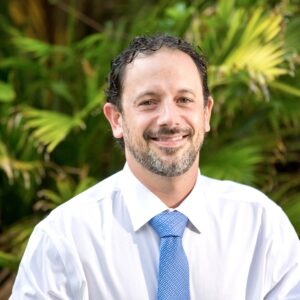By John L. Renne, professor at Florida Atlantic University
If history is a guide, Floridians will digest and respond to the lessons from Hurricane Ian and Nicole, thus becoming more resilient.
Such was the case after the Great Miami Hurricane of 1926 and the Okeechobee Hurricane in 1928 when an earthen dike around the lake collapsed and killed 2,500 people.
Then, the Florida Legislature created a flood control district to work with the U.S. Army Corps of Engineers to build new infrastructure, including floodway channels, control gates, and the Herbert Hoover Dike around Lake Okeechobee.
In 1992, Hurricane Andrew devastated Homestead. In response, Florida adopted recommendations from the American Society of Civil Engineers related to wind ratings. Florida was a leader in adopting these new building codes and has since been a model to other states in hurricane-prone areas.
Hurricane Ian was one of the top 10 most powerful storms to hit Florida and it caused significant damage from wind, storm surge and flooding.

Over the past five years, Hurricanes Irma and Michael punished our coasts with powerful winds and deadly storm surges. Hurricane Dorian would have been catastrophic but it turned north at the last possible moment, sparing Florida the damage from a Cat 5 hurricane that ravaged the Bahamas.
With the increasing frequency of major hurricanes, the state needs to develop a coastal resilience policy that is applied uniformly statewide that addresses storm surge zones.
This new policy should not be complex and must engage local municipalities. Cities, towns and counties should be required to engage with the public in developing and maintaining coastal resilience plans to minimize the effects of storm surges.
These plans should include flood control responses and development regulations to ensure that zoning codes do not permit new construction unless the neighborhood is protected and ground-floor elevations are above maximum storm-surge levels.
They should include new infrastructure to harden flood-prone areas. The strategies should feature effective nature-based solutions, such as creating new barrier islands in strategic locations, restoring mangroves, and building sea walls and floodgates. These investments should also enhance the quality of life and recreational opportunities.
A coordinated and standard approach among local, state and federal agencies will not just protect and save lives and property but also begin to address the longer-term existential threat posed by climate change and sea-level rise.
The benefits of a coordinated response far outweigh a piecemeal approach from each local government. For example, the insurance industry, which has been in a crisis in Florida, should have a seat at the table along with real estate developers and financiers.
The development and insurance industries and local governments have a vested stake in solving this problem. Reforms are needed to reduce the cost of insurance rates for homeowners.
Florida’s real estate industry historically has followed a boom-bust cycle. Rapid inflation, an economic recession and major hurricanes could spawn a bust, especially if the state becomes uninsurable because of the persistent threats of significant storms and flooding.
As Floridians recover from Ian and Nicole, billions will be spent on recovery and restoration. It is vital to remember that the damage today was mitigated based on the flood control and building code improvements from past hurricanes.
Enhancing coastal development protection and resilience in the 2020s can again set Florida apart as a leader for a nation that will face more and more natural disasters in the years ahead.
John L. Renne, Ph.D. is a professor of Urban and Regional Planning and director of the Center for Urban and Environmental Solutions at Florida Atlantic University. He is the author of several books on resilience including Adaptation Urbanism and Resilient Communities: Transforming Streets to Address Climate Change and Creating Resilient Transportation Systems: Policy, Planning, and Implementation.
The opinions expressed here represent those of the individual author and not necessarily those of Florida Atlantic University.
“The Invading Sea” is the opinion arm of the Florida Climate Reporting Network, a collaborative of news organizations across the state focusing on the threats posed by the warming climate.



